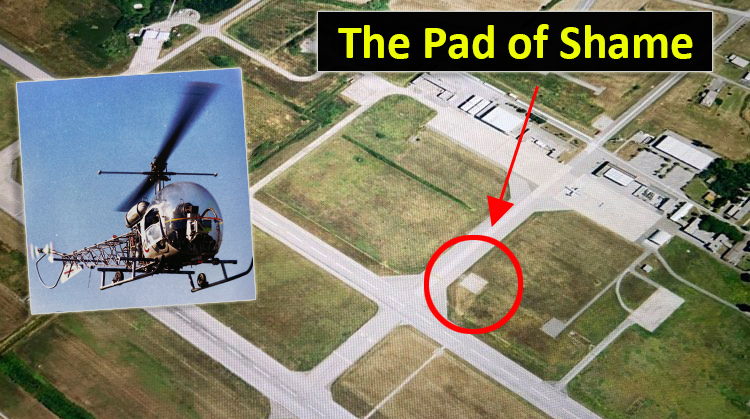How to shame a wannabe test pilot.
41°39’31.9068”N 12°26’31.8372”E: these are the geographic coordinates of the infamous “Pad of Shame”. If you plot them on Google Map, they will take you right smack in the middle of Pratica di Mare airbase, near Rome, Italy.
It’s located right off the taxiway that runs perpendicular from the Reparto Sperimentale Volo’s (RSV – the Italian Air Force Test Unit) parking apron to the secondary and primary runways 13/31 of the airfield.
It’s a quite small helipad and, there, tenths of fighter pilots have been throughly humiliated. I know that because I was one of them!
To join the RSV to become a test pilot, you have first to go through a selection process. I talked about that on my previous article about my flight in a B-52 Stratofortress bomber at Edwards Air Force Base. You got to that stage being a young, cocky, “combat ready” fighter pilot. You were probably halfway there to reach the first 1,000 flying hours on your F-104 or Tornado and you were, as you should have been, supremely self confident in your skills as a combat pilot: hell, you had mastered the F-104 Starfighter or the Tornado (and its back seater), so you had every right to be “full of piss and vinegar”.
That’s when the “Pad of Shame” hit you.
The selection process at the RSV included (and still does include), in its flying part, sorties on airplanes very different from the one you are flying at the moment. In my case, we got three sorties each on the MB-339, a basic jet trainer, and on the G-222, a twin prop turbo engine medium cargo aircraft.
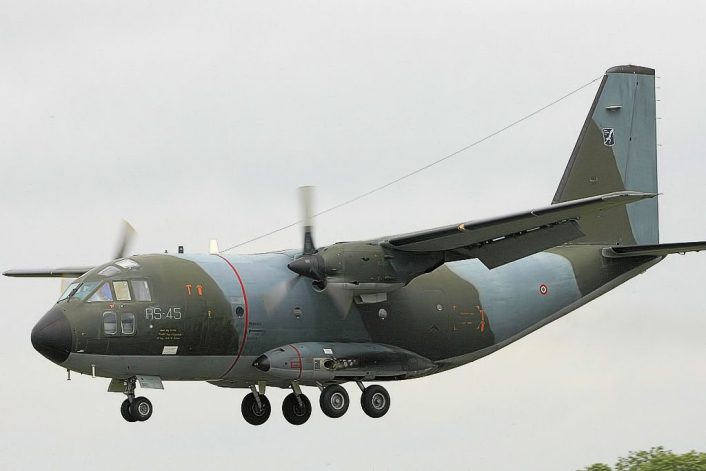
And three sorties on a helicopter.
In 1988, the year of my selection process, the RSV still had the AB-47G2, a piston engine driven light chopper, very recognizable for its great plexiglas ball and its structure made of welded pipes. Everyone have seen them in the Vietnam War movies and in the famous M.A.S.H. tv series.
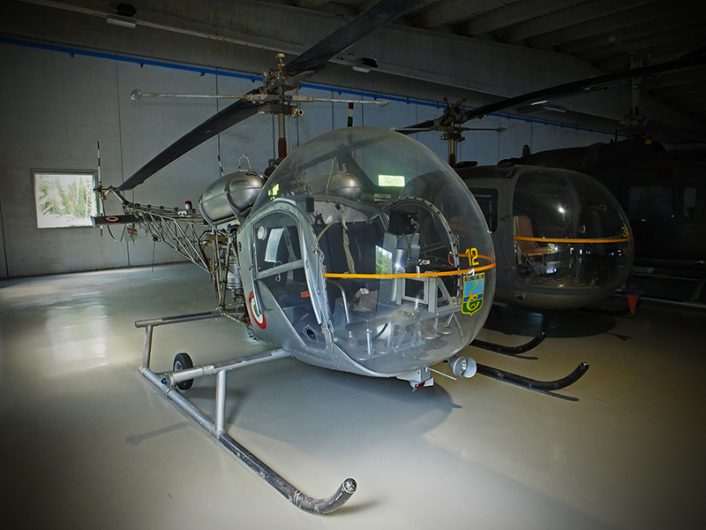
Later on, these selection flights would be flown with the NH-500, the egg-shaped Hughes helicopter.
So, one sunny day of spring in 1988, I was to be introduced to the secrets of helicopter piloting.
Going to the flight line I came across one of my friends participating in the selection, an F-104 pilot himself, coming back from his first helicopter sortie, and I wondered about his dejected air and the patches of sweat under the armpits and on the back of his flight suit.
After a few minutes, there I was, the steely eyed Starfighter pilot, strapping myself in this flimsy flying machine with no wings (the rotor whirling above your head it’s definitely NOT a wing) a strange lever with a twisting handle on the left and (YES!) a stick. And I knew everything about handling a stick, right? Ah yes, and pedals too, down there, but who cares about pedals? We fighter pilots didn’t really use those things. Maybe the Tornado weenies, with their two engines, sometime had to feed a bit of rudder while training for a single engine situation, like we did on the T-38. Last time I had to really use the rudder was while training on the SF-260, a light prop aircraft used for basic training in my Academy years, and I had promptly forgotten about that.
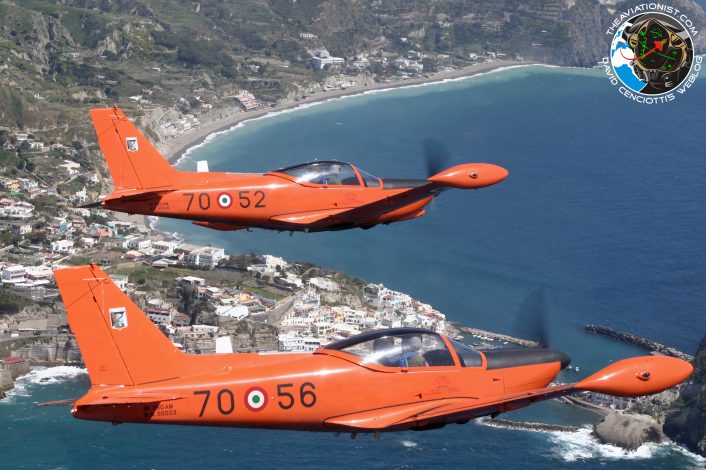
Before the flight, the RSV test pilot had, of course, explained me everything about the controls: he had talked about the cyclic (stick), the collective, the engine throttle on it and how to use the pedals (but, Sir, there is no rudder…). I had listened carefully and I thought that there was really nothing I couldn’t handle. Piece of cake…..
We started up, warmed up the piston engine, and then the test pilot took off and brought the helicopter to the “pad of shame”. We sat there hovering for a few seconds and then the instructor told me “you have control”. “I have control” I answered; but, after a few seconds, I really did not have any type of control anymore on the damn thing. The G2 started to kick and buck like a runaway horse with me hanging on for my dear life: the controls seemed all wrong and everything I was trying on one control was resulting in something unexpected to be corrected with the other two (well, three, if you count the throttle too). If the helicopter started to climb for any unknown reason, I would push the stick forward like any good airplane pilot would do (stick forward, bigger houses, stick back, smaller houses), but then the thing would not go down but forward; “whoa, slow down!”, and pull back on the collective, but then the machine would still go forward and up too! Plus it would also yaw to the right because I had to counter the rotor rpm drop increasing the throttle setting, so I needed to push the left pedal. It was a nightmare. I was not the pilot anymore, I was just along for the ride.
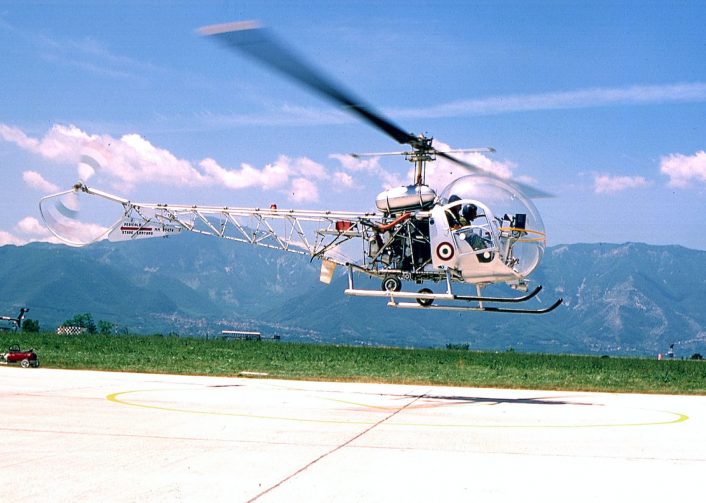
After few scary minutes, for both the IP and I, I managed to settle down a bit, but not too much. At that point I would call it a success if I could have managed to keep the little dude within 500 feet of the “pad of shame”.
Never a name was more appropriate!
After a hour of this torture I was brought back to a final landing by an exhausted (and scared, I guess) test pilot. I was totally disheartened and soaked wet in sweat. Crossing the next “victim” with his IP, I knew exactly what he was wondering looking at the dejected me in my stained flight suit.
I also found out that the Squadron Operation Room (SOR), which has a tower-like window facing the airfield (and the infamous pad), was packed with people having the time of their life looking at those hot shot pilots being humiliated by a little old helicopter.
I think that’s where the name “Pad of Shame” was born. And rightly so.
In the subsequent two sorties I eased a little bit my problems renaming the controls: the collective became the “UP/DOWN” and the cyclic the “FORWARD/BACKWARD”.
I was lucky enough to be chosen to join the RSV, notwithstanding my poor performances as a helo pilot. When I came back the next year, after attending the War College, I was disappointed to find out that the AB-47 G2 had been retired from “active duty”. I really wanted to tame that little S.O.B.!
By the end of my year as an “ascaro” (look at my article on the BUFF to find out what an “ascaro” is) at the RSV I was quite proficient in both the NH-500 and AB-212 helicopters.
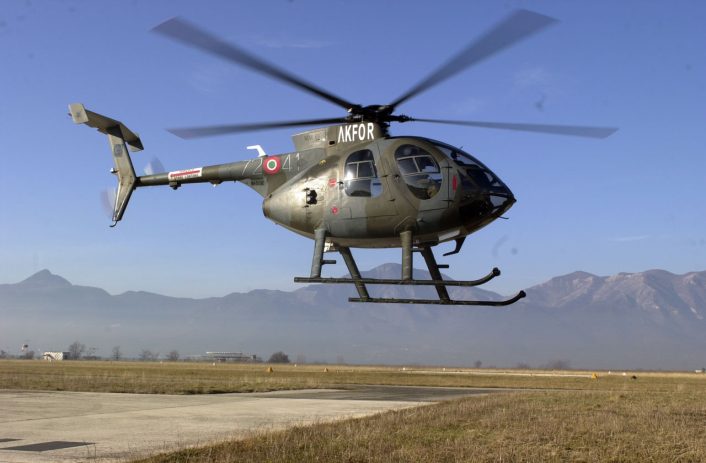
Bottom line is that, with training and experience, a pilot can take airborne just about anything, even a helicopter.
There is a little footnote to this story.
During the annual field trip with the USAFTPS we went to visit the USNTPS at Patuxent River. We got to fly their airplanes: the F-18, the A-4, the T-2 Buckeye and… an UH-1N Twin Huey. A helicopter! By then I had already guessed that they had their own version of the “pad of shame” and I figured out that my classmate and I were about to be exposed to it. So, when asked about previous helo experiences I just played it dumb and said that no, I had never tried one of those twirly things.
It was fun looking at my classmates having their dose of shaming while I passed as a “natural” for my unbelievable skills in handling the Huey in my “first flight” as a chopper pilot.
I had to confess everything later on to my USAF classmates and I had to pay my dues at the O’Club. But I was forgiven because, when it comes to Air Force vs. Navy, anything goes.

